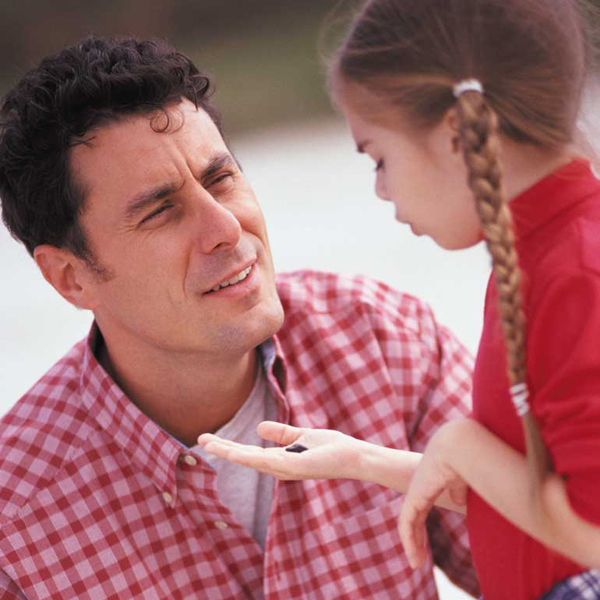For the child, being adopted can often be a glass-half-full or half-empty situation. When our children are preschoolers, we teach them to look at it as a glass-half-full blessing. We didn’t give birth to them, but we went out of our way to choose them above all other waiting children.
This framing of the adopted child’s life story usually works well for preschoolers. But at about age six, their feelings about adoption can start to change. Children begin to develop the rudiments of logical thinking and with this budding skill often comes the realization that in order to be a special, “chosen” child in an adoptive family, someone first had to decide not to raise him or her.
Many adoptive children struggle silently — and some not so silently — with this first view of the half-empty glass of their personal stories, which we call the dichotomy of the chosen-child message.
Other developmental tasks and stages at this age often act to complicate matters further for adoptive children. When they ask themselves who was at fault for what happened, they quickly discover three main suspects: their birth parents, their adoptive parents, or themselves.
Fantasies about “perfect parents” are also common among children this age. For this reason, adopted children often exonerate their birth parents, who are frequently the ones about whom the child is fantasizing (“My birth mom would never make me eat broccoli!”). At the same time, the green logic of first and second graders leads many children to conclude that if their adoptive parents had not been willing and able to adopt them, their birth parents would have chosen to keep them. Thus, it’s all the adoptive parents’ fault.
Probably the most painful conclusion children can — and do — draw is that they themselves are to blame for their birth parents’ decision. All too many adopted children, at some point, believe they cried too much, wet their diapers too much, were “bad” babies, or had something wrong with them that led their birth parents to their decision. The risk here is that the child will get stuck in the belief that she is somehow innately flawed, so much so that her own birth parents chose not to keep her.
What to Do
Parents can do several things to help their children through this new understanding — and misunderstanding — of what it means to be adopted. Here are a few:
Challenge the thinking. We don’t want children to “blame” their birth parents, but they do need to understand who had the power in the situation. Tell your child what you know about his or her birth parents and the circumstances surrounding their decision.
Ask your child to think about someone he knows who is about the same age, or in similar circumstances, as his birth parents were. Would that person be able to take good care of a child? Ask your child to think about a specific baby or preschooler she knows. What is that younger child capable of doing? What could that baby do in a situation similar to that of your child when she was placed for adoption?
Talk about feelings. Talk with your child about how his birth parent(s) felt or probably felt. Placing a child for adoption is never an easy decision. It almost always comes with a great deal of pain.
Even parents who have involuntarily lost their parental rights feel sad and cry at the loss. And a child who is worth crying for certainly has worth as a human being.
Talk some more about feelings. Some situations in life really are mixed blessings. A glass that is half full is also half empty. Let your child know it is okay to feel both happy and sad, angry and glad. Books like Double Dip Feelings: Stories to Help Children Understand Emotions by Barbara Cain can be great conversation starters.
Always remember, it’s not about you! One of the hardest things for many adoptive parents is keeping their own fears and insecurities in check so they can help their children through these rougher times. Adopted children can grieve for and struggle over the loss of their birth parents, while continuing to deeply love their adoptive parents.
Just as your decision to adopt and your child’s birth parents’ decision to place were two separate events, your child’s grief is a separate issue from his or her feelings about being your son or daughter. Though it isn’t always easy, you will help your child work through his or her feelings about the flip side of adoption if you don’t take it personally.
The truth about adoption is that the glass is both half-full and half-empty. The first thing we need to remember as parents is that our children’s feelings about the empty half are, in many ways, a separate issue from their feelings about the full half. In other words, they can grieve for their birth parents while still loving us, their adoptive parents.

